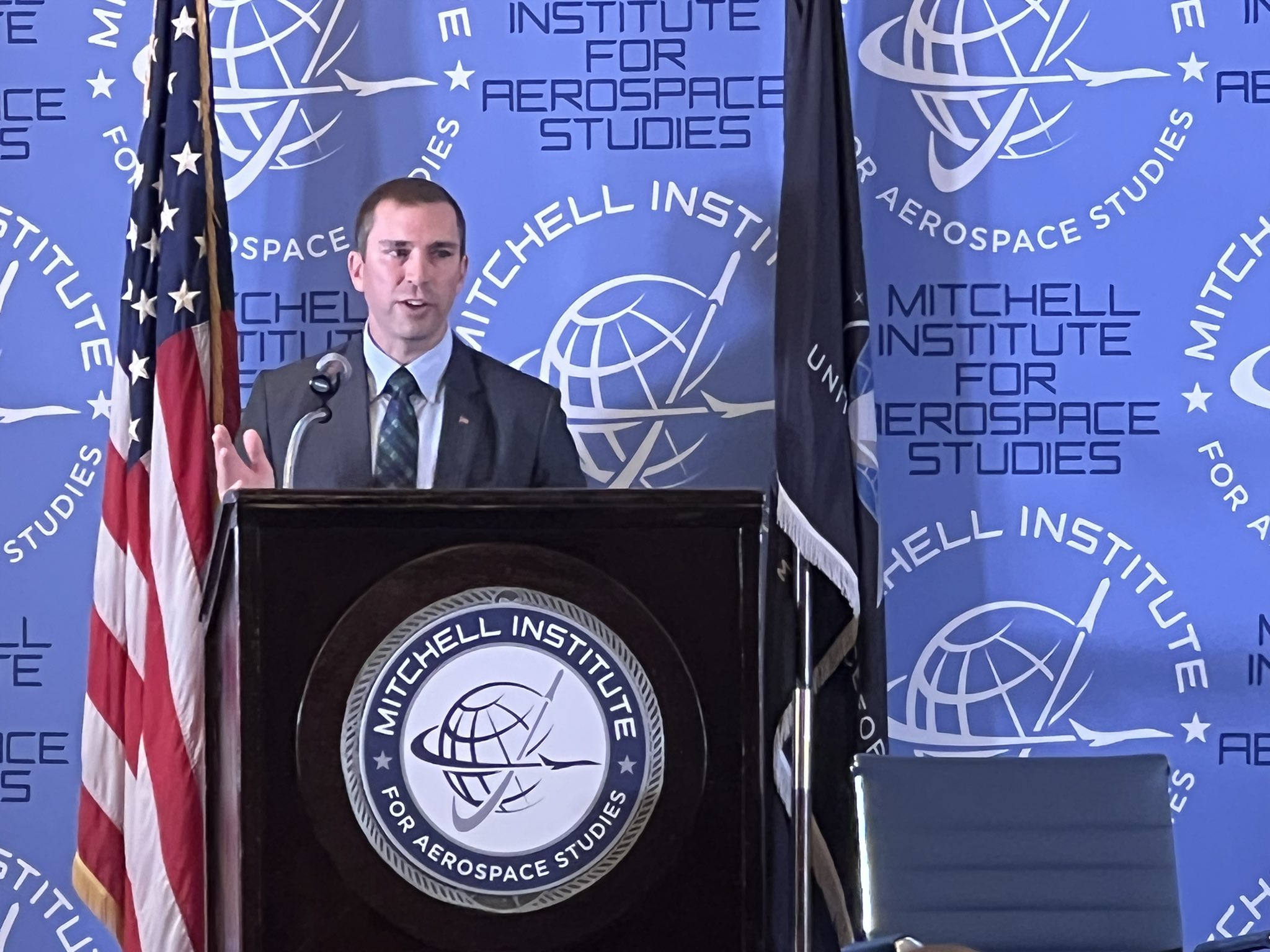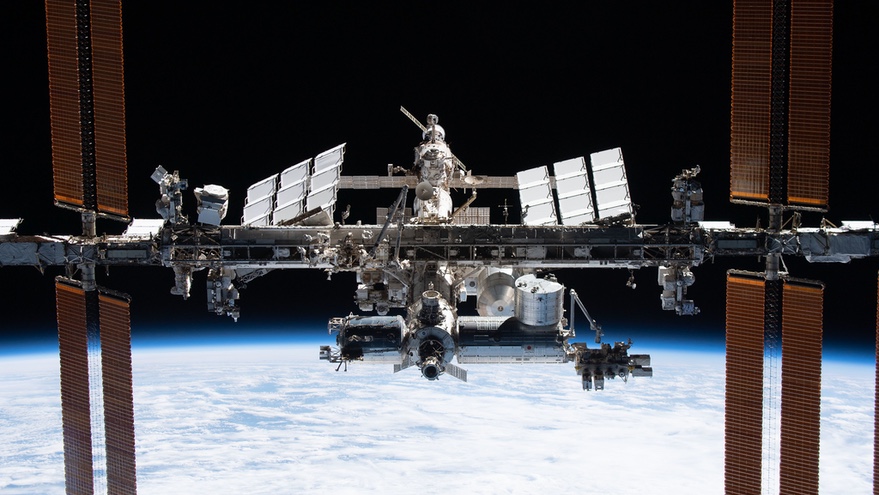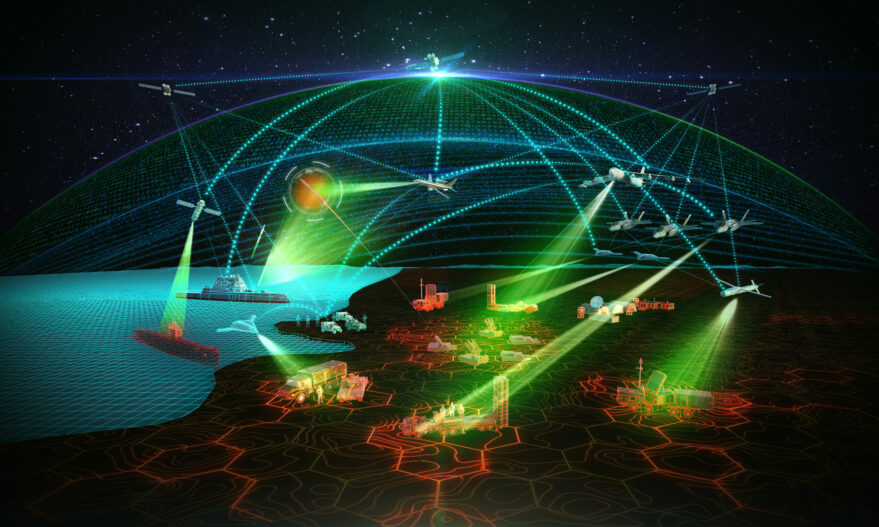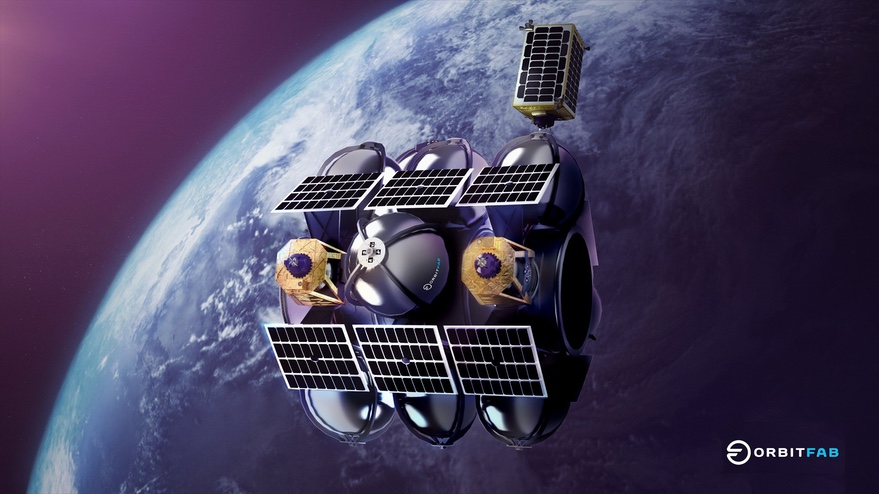Starlink’s survivability in war a good sign for DoD’s future constellation
Original Publication Date: 2022-10-25 18:47

Russian officials have made veiled threats to obliterate SpaceX's internet satellite network. To date, “how many Starlink satellites have the Russians shot down? … zero,” noted Derek Tournear, director of the U.S. Space Force’s Space Development Agency. The performance of SpaceX’s 3,500-plus satellite network during an armed conflict is encouraging to the Space Development Agency.
Newly acquired NanoAvionics plots major smallsat expansion
Original Publication Date: 2022-10-25 20:33

NanoAvionics has changed its name to Kongsberg NanoAvionics. The Lithuanian company sold a majority stake to Kongsberg Defence & Aerospace. NanoAvionics CEO Vytenis Buzas said Konsberg’s resources will help expand the company.
ISS partners weigh options for using commercial space stations
Original Publication Date: 2022-10-26 11:34

Several countries involved in the ISS say they are looking at options for how to continue work they currently do on the ISS. The ISS today relies extensively on barter arrangements among participating agencies. Such arrangements are unlikely to work for commercial stations, however. “We need to find a new way of cooperating,” says Nicolas Maubert, space counselor at the French Embassy.
Identifying satellite UFOs - SpaceNews
Original Publication Date: 2022-10-25 18:37

More than 300 objects in low Earth orbit were listed as unidentified at press time. The U.S. Military has listed improving space domain awareness as a high priority for more than a decade. Australian startup High Earth Orbit Robotics is building its own database of in-orbit objects.
Defending against near-peer adversaries requires a shift in collaboration between forces - SpaceNews
Original Publication Date: 2022-10-25 16:10

The need for persistent, responsive and resilient sensing from space has never been greater. Historically, space-based sensing of relevant targets has fallen under the function of Intelligence, Surveillance and Reconnaissance. A broad-based end-to-end solution to streamline intelligence efforts must be nimble and quick.
Orbit Fab secures new investor to support satellite refueling efforts
Original Publication Date: 2022-10-25 13:00

Orbit Fab is developing infrastructure for in-space refueling of satellites. The company announced in August it would offer in-space hydrazine refueling starting in 2025. Refueling is emerging as a key initial market for the broader satellite servicing industry. 8090 Industries bills itself as an investment firm that backs “category-leading industrial giants of tomorrow.
Russian cargo ship launches on flight to space station – Spaceflight Now
Original Publication Date: 2022-10-25 00:00

Russia launched a Progress supply freighter Tuesday on a two-day trek to the International Space Station. A Soyuz-2.1a booster launched the Progress cargo ship at 8:20:09 p.m. EDT Tuesday (0020:09 GMT Wednesday) The supply ship unfurled solar panels and navigation antennas to begin the flight to the space station.
NASASpaceFlight.com
OneWeb launches 36 satellites aboard India's GSLV Mk.III rocket. Mission marks the first commercial launch for the GSLV. Launch took place at 12:07 AM local time on Sunday, Oct. 23 (18:37 UTC on Saturday, Oct. 22)
Commercial Archives
Rocket Factory Augsburg is a German launch startup. The RFA One rocket is RFA’s first launcher in development. With the ultimate goal of building rockets like cars, the RFA One is the company’s first rocket in development. RFA co-founder and COO Dr. Stefan Brieschenk talked about current manufacturing methods and upcoming plans.
International Archives
Roscosmos launched Progress MS-21 atop a Soyuz-2.1a rocket from the Baikonur Cosmodrome, in Kazakhstan, at 8:20 PM EDT on Oct. 25. The Progress MS-21 spacecraft will conduct a standard two-day autonomous rendezvous with the International Space Station.
Chinese Long March 3B Launches APStar-6C Communications Satellite – Spaceflight101

China launches APStar-6C communications satellite for APT Satellite Holdings to join their constellation of Geostationary Communications Satellites. Long March 3B lifted off from the Xichang Satellite Launch Center at 16:06 UTC on a mission of under half an hour to lift the spacecraft into an elliptical Geostationary Transfer Orbit. Confirmation of launch success was provided by APT Satellite around 40 minutes after liftoff.
Blue Origin’s New Shepard Reaches new Heights in latest Test Flight – Spaceflight101

Blue Origin's reusable New Shepard launch system reached new heights on Sunday for the eighth test flight. The flight was designed to expand the vehicle’s operational envelope by sending it to a peak altitude of 107 Kilometers. Sunday’s flight marked the second for this particular set of hardware, following up on the successful December 2017 mission that debuted “Crew Capsule 2.0”
ISS Updates – Spaceflight101 – International Space Station

A veteran NASA spacewalker and an EVA rookie from Japan ended their week with nearly six hours of work outside the International Space Station. The restoration of the Station’s Mobile Servicing System started last year and continued in January to provide Canadarm2 with a new pair of grappling hands.
Featured – Spaceflight101

A SpaceX Falcon 9 took to the skies over Florida’s Cape Canaveral Monday afternoon. The Falcon 9 lifted a flight-proven Dragon spacecraft into orbit for a critical delivery of science gear, supplies and maintenance hardware. It is the first of at least six cargo ships inbound to the U.S. Segment of ISS this year.
News – Spaceflight101

A Russian Rockot booster is set to blast off from the Plesetsk Cosmodrome at 17:57 UTC on Wednesday with the Sentinel-3B multi-function satellite. The rocket will carry a Russian Rockot booster with a Sentinel-3B satellite.
Re-Entry: Long March 11 Rocket Body – Spaceflight101

The CZ-11 fourth stage used leftover propellant for a partial de-orbit maneuver, lowering its perigee to 120 Kilometers to significantly accelerate its orbital decay. It is reportedly built around a YF-50 main engine and in a nominal mission conducts the orbital circularization after the three CZ-11 stages.
Methane ‘Super-Emitters’ Mapped by NASA’s New Earth Space Mission

NASA’s Earth Surface Mineral Dust Source Investigation (EMIT) mission is mapping the prevalence of key minerals in the planet’s dust-producing deserts. EMIT has demonstrated another crucial capability: detecting the presence of methane, a potent greenhouse gas. In the data EMIT has collected since being installed on the International Space Station in July, the science team has identified more than 50 “super-emitters” in Central Asia, the Middle East, and the Southwestern United States.
Edward Stone Retires After 50 Years as NASA Voyager’s Project Scientist

Linda Spilker will succeed Stone as Voyager’s project scientist. Jamie Rankin, a research scientist at Princeton University, has been appointed deputy project scientist. The twin Voyager spacecraft launched in 1977, on a mission to explore Jupiter and Saturn. Voyager 1 continued its journey out of the solar system, while Voyager 2 continued on to Uranus and Neptune.
NASA to Host Briefing on InSight, Mars Reconnaissance Orbiter Findings

NASA will host a virtual media briefing at 2 p.m. EDT (11 a.m. PDT) on Thursday, Oct. 27. Science team members from both missions will explain how data and images from each spacecraft contributed to the discovery. The virtual briefing will livestream on NASA Television, Twitter, Facebook, and YouTube.
NASA to Discuss Latest EMIT Findings, Helps Address Climate Change

NASA will host a media teleconference at 3 p.m. EDT (12 p.m. PDT) Tuesday, Oct. 25, to discuss the latest findings of the agency’s Earth Surface Mineral Dust Source Investigation (EMIT) EMIT was installed on the International Space Station in July. Its primary mission is to map the prevalence of key minerals in the planet’s deserts in order to advance understanding of airborne dust’s effects on climate.
Why NASA Is Trying to Crash Land on Mars

The SHIELD concept could be used to land on planets or moons with denser atmospheres. To test the theory, engineers needed to prove SHIELD can protect sensitive electronics during landing. The team used a drop tower at JPL to test how Perseverance’s sample tubes would hold up in a hard Earth landing.
Satellite to Study Earth’s Water Arrives at Launch Site

SWOT arrived at Vandenburg from France aboard a U.S. Air Force C-5 Galaxy aircraft. The satellite will collect data from the ocean, helping researchers better understand how seawater absorbs atmospheric heat and carbon. It will also provide the first comprehensive global survey of freshwater lakes, rivers, and reservoirs from space.
NASA’s Curiosity Mars Rover Reaches Long-Awaited Salty Region

NASA's Curiosity Mars rover recently arrived in a region of Mount Sharp enriched with salty minerals. Scientists hypothesize that billions of years ago, streams, and ponds left behind the minerals as the water dried up. The minerals were spotted by NASA’s Mars Reconnaissance Orbiter years before Curiosity landed in 2012.
